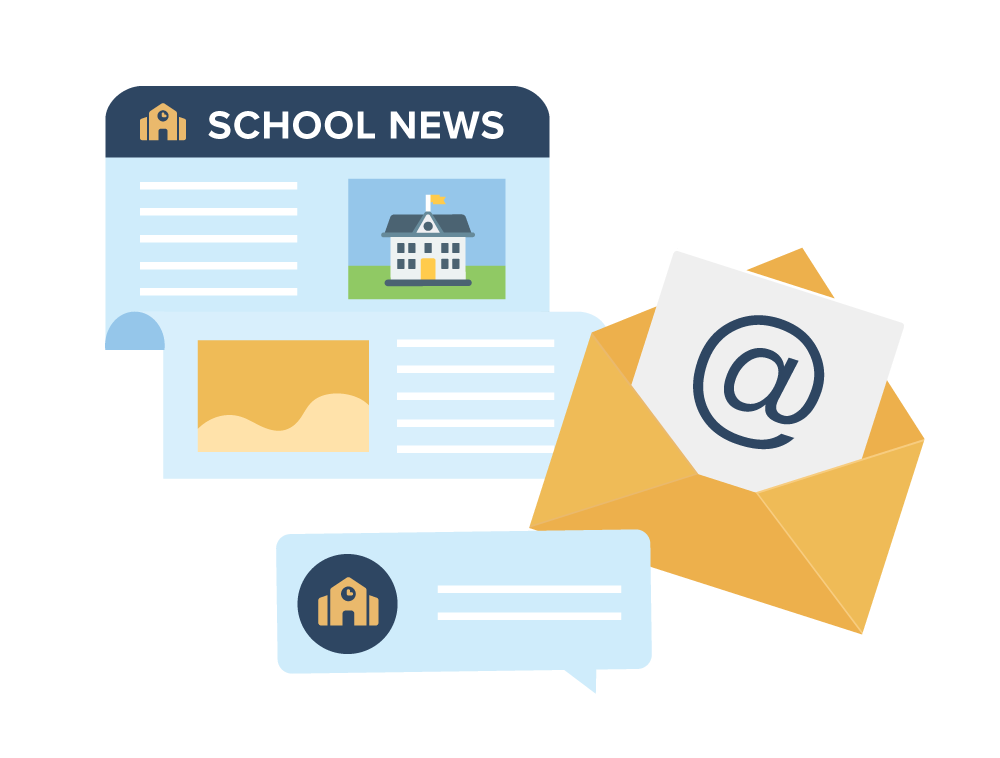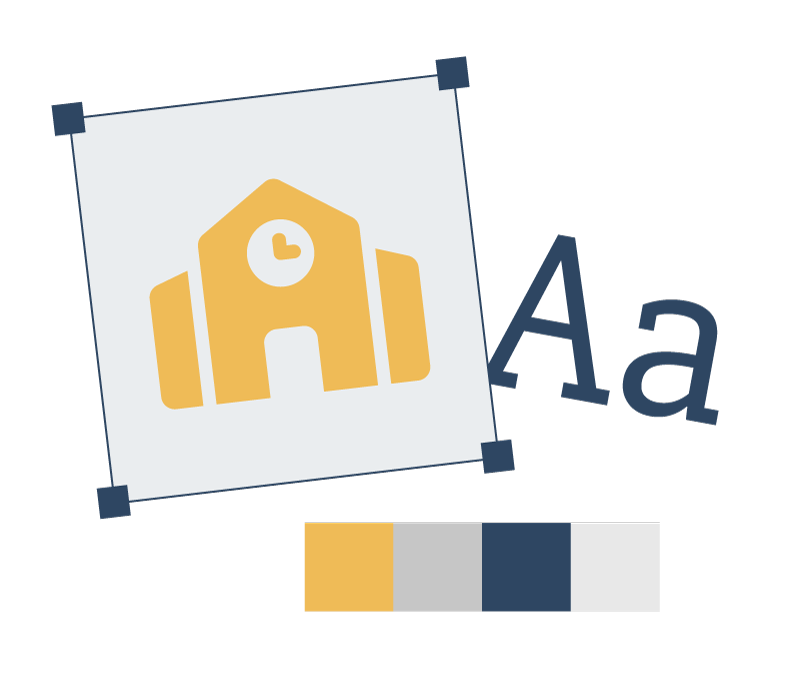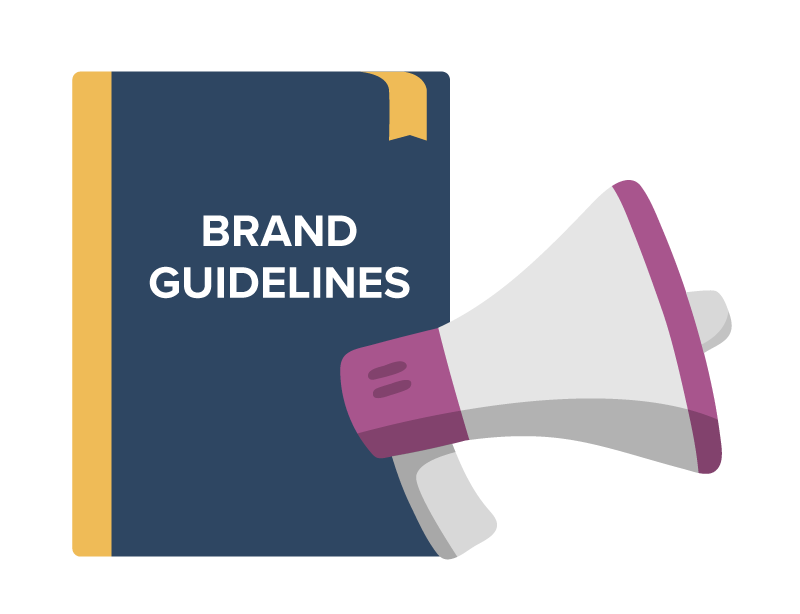This is the final blog in a series on simple, high-impact strategies for building your district brand. Previously: Defining Your Brand to Get the Most Out of District Communications and Introducing Your Brand With Your District Website

Now that you’ve successfully branded your district website, it’s finally time to tackle the rest of your district communications.
By now, we’ve seen that great branding works through repetition: The more your stakeholders encounter your brand, the more memorable it becomes. When it comes to consistently getting in front of your community, the most effective way to optimize your brand reach is to leverage the communications that your district is already pushing out.
For maximum efficiency and impact, we recommend focusing on digital communications. Most districts already use digital tools for some, if not all, of their school-home communications, and platforms like ParentSquare include features that let you manage multiple channels—and key brand elements—from a single consolidated place.
For the final blog in this series, we’ll cover practical tips for strengthening your district brand through digital communications, from mass notifications to classroom newsletters.
Branding communications that come from the district
Every district runs on a constant stream of information from school to home: district announcements, attendance notifications, calls from the front office, report cards, emergency alerts, and more. And that isn’t even counting all of the classroom-level communication coming from teachers, coaches, and other activity leaders.
Start with your highest-impact touchpoints
As with most large and potentially overwhelming projects, the best way to tackle branding is to break things down into smaller pieces so you can begin prioritizing tasks. In this case, instead of mapping out all the digital communications that might be happening in your district, identify the notifications that families receive directly from the district—not their schools or teachers.
You may want to consider:
- What gets sent from the district office?
- What comes from the superintendent or other district administrators?
- What needs to be sent out to your entire district community?
These types of communications often fall under the category of mass notifications, and they can vary from emergency alerts to regular newsletters. Because they’re built to reach so many people at the same time, mass communications from your district can be a particularly high-impact avenue for increasing the visibility of your brand.
Building your brand into district communications

Depending on what your district is sending out, you might be working with emails, app notifications, text messages, and posts on a dedicated app or platform—or, often, notifications that are sent on multiple channels at the same time.
While the format and design requirements will vary from channel to channel, the look and feel you’ve defined for your district can be incorporated across any digital communications that allow customizable designs, like emails and updates on a communication platform. It’s a good idea to decide on a consistent approach for each channel, and it’s even better if you can create templates to save time and eliminate the need for one-off design decisions.
If you have the option to customize design layouts, think about prioritizing:
- Logos: Your district logo is one of the most recognizable components of your brand, so make sure to build it into the design layouts of your digital communications. Logos often appear somewhere unobtrusive, like headers or footers, but they can also be featured front and center in a design.
- Fonts: Check to see if you can use your brand fonts in your digital communications. If they’re not available for the body text of your communications, see if you can build them into header text or even images that include text.
- Color palette: If you can build fully designed templates that use your brand colors, that’s fantastic—but it isn’t always an option because of platform functionality or design skills. (We’re not all designers, and that’s okay!) But even if you’re working with more limited resources, there are ways to incorporate your color palette into your district communications, like changing the color of backgrounds or text elements like titles and headers.
If your communication channels don’t have customizable design layouts, whether because they’re text-based mediums or the platform you use doesn’t offer the option, there are still opportunities to include key brand elements in your messages. For example, you can:
- Attach branded image assets to your messages. This is similar to what we see on social media platforms, where you can’t change how a Facebook or Twitter post will appear in recipient feeds—but you can add images that include your logo, brand colors, and fonts.
- Come up with a consistent greeting and/or signoff that you can use in writing across all of your communications, whether they include images or not. You can draw on your brand values, use your district motto or slogan, or just come up with a phrase that feels right for your community.
Once again, repetition is key. When families recognize and expect certain elements in your communications to them, from visual elements to a certain voice and tone, that’s a sign that your district brand is making an impact.
Creating brand advocates throughout your district
As much as you can achieve with a strategic approach and best practices, one person or even team can’t build a district brand alone. To pull your brand through as many touchpoints as possible, turn school leaders and staff into brand advocates by making it as easy as possible for them to incorporate brand elements in their own communications.
Brand Guidelines

First, it’s important to give your schools clear parameters to work with. Are there tools, materials, or brand elements from the district that they’re required to use in their own communications? Alternately, what touchpoints should schools develop independently, and are there any best practices or guidelines they need to keep in mind as they do?
To make sure your school sites are on the same page, it can be helpful to create brand guidelines that they can easily follow. These might include:
- How schools are required to use district branding like district logos, colors, fonts, and images. If there are specific directions for sizing, placement, or other usage that they should keep in mind, be sure to add them.
- How schools are expected to maintain their own brands. This will look different from district to district, depending on the level of district oversight into school branding. Your district may define individual school branding, provide general guidelines that each site needs to follow, or leave it entirely up to them.
As with the other branding strategies we’ve discussed, these guidelines don’t need to be extensively detailed or comprehensive. Prioritize visibility and impact when you’re thinking about your requirements and start there—once you’ve covered your major touchpoints and channels, you’ll have room to work out the rest of the details.
Tools and templates

Along with sharing brand guidelines, consider equipping your community with tools and features that help them send out effectively branded communications. These don’t need to be complex or even particularly advanced; instead, look for ways to minimize one-off designs and workflows.
If your district uses a platform like ParentSquare, creating and sharing pre-built templates that include logos, backgrounds, and color schemes will help school leaders and staff save time and stay on brand. Similarly, design tools with built-in brand elements allow them to easily create new layouts and formats that align with your brand guidelines.
Choosing the right platform for branding your district communications
Ultimately, strengthening your district brand comes down to consistency: Being able to showcase key brand elements in the same way across multiple touchpoints. But while these tips can help you build your brand regardless of the tools you use, choosing the right platform can make branding your school-home communications faster, easier, and more impactful.
A unified platform like ParentSquare lets your entire district create and send digital communications that reflect and deepen engagement with your brand. From creating beautifully designed newsletters and posts with Studio Editor to setting up school colors and logos with curated communication templates from Canva, ParentSquare makes it simple to let your brand shine across all of your district communications.
If you’re interested in how you can amplify your district’s voice and strengthen your district’s identity with ParentSquare’s unified communication platform, sign up for a demo here. Our team is always happy to connect!







